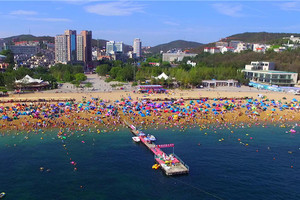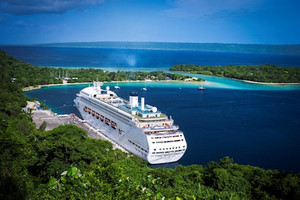
Tianjin is the largest port in northeastern China, and while the city is a good to explore, for most cruise passengers, especially new visitors to China, the main draw card is access to Beijing.
Overview
The reasons for visiting Beijing are many; it’s been the seat of power in China for centuries, packed with fascinating historical sights such as the Forbidden City, Tiananmen Square, the Summer Palace and more. Also, beyond the city limits, is the Great Wall, a spectacular feat of engineering, and a sight which has to been seen with your own eyes. Beijing is one of six ancient cities in China, and while its roots are steeped in history, it is also very much the modern heart the country. It’s also become one of the most popular destinations to visit, by ship and by air, welcoming over four million international visitors a year.
The Facts
Location: North eastern coast of China (Tianjin).
Currency: Yuan.
Docking/Anchoring: Ships dock at the International Cruise Port in the port of Tianjin (not to be confused with the Xingang Passenger Terminal), which is 170 kms southeast of Beijing, and 50 kms east of the city of Tianjin.
Transport: As the main attraction of this port is Beijing, most people will take an organised excursion from the ship. That said, the closest train station to the cruise terminal is Tanggu, which is approximately half an hour away; its a commuter train and seats sell out. Taxis are usually available but you will need directions translated into Chinese to be safe, as drivers don’t speak English. You will also need local currency.
Don’t Miss
The Forbidden City is located in the centre of the city, and was the imperial palace during the Ming and Qing dynasties, and special permission had to be given by the emperor to visit. Today it’s known as the Palace Museum, the world’s largest palace complex, which covers an area of 74 hectares, and is surrounded by a 52-metre moat and 10-metre high wall.
Tiananmen Square is also in the centre of Beijing, and the place to visit the Tiananmen Tower, the Monument to the People’s Heroes, the Mao Zedong Memorial Hall and more.
The Summer Palace is in the Haidian District northwest of the city, about 15 kilometres from the centre. It’s the largest and most well-preserved royal park in China, famous for natural views.
The Temple of Heaven is tucked away in Chongwen, and the place where the emperors of the Ming dynasty used to hold the Heaven Worship Ceremony, as well as China’s largest and example of sacrificial buildings. It was opened to the public in 1988 to feature ancient philosophy, history and religion.
Lama Temple is second only to the Temple of Heaven, and a delightful complex comprising an impressive structure of buildings adorned with bright gold-tiled roofs. Built in 1694, it’s a place of worship for Tibetan Buddhism.
Best Photo Op
The best photo ops are pretty much the top sights to see in the city and beyond. The Great Wall and surrounding countryside from on top of one of the towers in the Badaling section is one of the most popular, and one of the most recognised photographs symbolically, while in Beijing, go to Tiananmen Square and photograph the Tiananmen Tower, and the Monument to People’s Heroes.
Shopping
The Panjiayunan Market, essentially a giant flea market, is worth a look for everything from jewellery and paintings, to Buddhist statues and ceramics, and the place to snap up a bargain. There are also shopping complexes scattered about the city, with popular business centres including Wangfujing Street, the Hongquiao Pearl Market, Silk Street and Xidan Commercial Street. Souvenirs to consider include jade and lacquer products, also silk, pearls, and for anyone with a sweet tooth, candied fruits and confectionaries.
Food and Drink
The Chinese people take food very seriously, with eating out a major ritual for many. Because of the sheer size of China, there are many different styles of food to try, and in recent years, although outshone by Shanghai, Beijing is growing in culinary stature. If you’re on a tour you are likely to have your dining options already decided for you, however, if you have a chance to venture out on your own, local delicacies to try include Peking roast duck, Zhajiang noodles, which are wheat noodles with shredded cucumber, radish and soybeans, Guan Chang, which is a snack of flour or starch mixed with spices, stuffed into pigs intestines like a sausage and fried, and a savoury cake called Wan Dou Huang.
Pick of the Excursions
Beijing is often offered as a full day or overnight excursion given the proximity of the city from the port of Tianjin, and the time it can take to travel between the two; anything from two to four hours depending on traffic. A day tour will often cover the most popular sights in the city, such as the Forbidden City and Tiananmen Square, while an overnight tour will include the Great Wall and possibly local entertainment.
The Great Wall was built during the Ming dynasty, and is the best preserved and observed of Chinese walls, as well as a symbol of China and Chinese culture. It spans around 600 kilometres, with over 800 platforms and countless towers, with the Badaling one of the most popular sections for tourists to visit. It’s about 70 kilometres from Beijing, and sometimes offered as a separate day excursion.
Tianjin is worth exploring if you have “done” Beijing, or don’t want long, tiring full-day or overnight tour. The city has plenty of tourist attractions of its own, including the Dule Temple, Haihe River, Panshan Mountain, the Huangyaguan Great Wall and more.
- By:
- Joanna Hall






